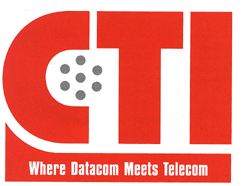|
Proven technology, an abundant feature set, and simple maintenance
— these ar the keys to a superior voice mail systems.
One system that meets these goals is the new Voice Wizard,
based on Dialogic’s VoiceBrick technology and VoiceGate’s
own VIP4000 design. (The product
shot at the top of this review shows the Dialogic Voice Brick.)
The Voice Wizard is designed for
small to medium-sized businesses. It installs in less than
a day; it presents a customizable menu structure; and it offers
features like remote notification and fax detection.
Although the Voice Wizard works with
several dozen PBXs our laboratory PBX (a Nortel model) wasn’t
on the list. Fortunately Dialogic’s New Jersey-based
Professional Services laboratory which is located about 90
minutes from our Connecticut offices donated their facilities
for a day.
INSTALLATION
We started by attaching the A/C adapter and a security dongle
into the unit’s COM 2 port. The COM ports were clearly
labeled. There was no on/off switch. Instead. the Unit automatically
powered on and ran a POST sequence. When this sequence was
complete (when the unit’s LEDs stopped flashing), we
plugged in four single- extensions from the PBX (using RJ-45
connectors) to the unit’s four ports. Then we made sure
that the four lines were in order, matching the unit’s
ports.
The next step was system programming which may be accomplished
using a telephone or a PC-based terminal emulation program
like Hyper Terminal or ProComm Plus. We wanted to test both
methods of configuration so we did the initial programming
with a telephone and then we made adjustments later using
Hyper Terminal with Windows 95.
We dialed the Voice Wizard on its
first extension although we could have dialed any extension
to continue — it doesn’t matter which port is used
for set-up. We did, however have to account for the switch
we were using. The Dialogic laboratory’s PBX, an AT&T
Partner Plus model requiredthat go through port number 10
or 11 for configuration, so we made sure that we used extensions
10, 11, 12, and 13 off of the PBX.
To enter the system as the system administrator. we had to
press the pound Sign (#) on the telephone’s key pad immediately
after hearing the initial menu tree. Then, we had to enter
the administrator ID and password. (The default administrator’s
ID is *99; the default password, *99*99.) We then navigated
various options. choosing to “change telephone system”
(choice 6), and electing to use the AT&T Partner Plus
model (choice 110).
Once these selections are made, the user follows the command
prompts to return to the main menu. From this point, every
selection depends on an organization’s unique circumstances,
but the biggest step is to make user accounts. Entering the
date for these accounts simultaneously configures data for
the name search feature, but every user’s name must be
entered by using a letter-to-numeral charting method, which
is extremely tedious. Names must be at least two characters.
At least the mailboxes and extensions can be created in a
lump sum.
End-user setup, like system setup, is just another trek through
a tree-structure labyrinth. Navigating through these menus
isn’t difficult, but the choices are numerous. so we
suggest keeping One of the many included copies of the mcnu
system handy.
Basically, all setup demands of you is patience. Our patience
was tried only once, when we had to program the user account
passwords. Default passwords are the user ID entered three
times, if the ID is two digits; or entered twice, if the ID
is three digits; or entered just once. if the ID is four digits.
Fortullately, once this technique is mastered, users can easily
reset tlle password to anything they like, up to six digits.
DOCUMENTATION
Our Voice Wizard system came with
four sets of documents. The first was the main administrator’s
manual; the second was a start-up guide; the third consisted
of the user’s manuals; and the fourth consisted of the
user’s pocket guides. Overall, the documentation does
a good job explaining the features and settings, and all the
guides are well organized and well illustrated. However, users
and administrators may have a hard time finding certain details
related to configuration.
Users, for example, may have difficulty finding information
on changing passwords. (For some reason, this information
is buried deep within the user’s manual.) Administrators
might have to consult one or another of the user’s pamphlets
for various configuration details. (We’d recommend repeating
this informationl in the administrator’s manual, the
better to elimillate some unnecessary paper shuffling.) One
other sore point: We found that the documentation for emulation
access was severly limited.
FEATURES
The Voice Wizard’s has so many
features that discussing all of them would be tantamount to
writing a book on SOHO voice mail concepts. Consequently,
in this artiele, we’ll concentrate on a few standout
features, that is, features that you would expect to find
only in a high-end system. Examples include remote notification,
remote configuration, multiple levels of account security,
surname searching, fax call detection, and a wide variety
of customization options.
The remote notification feature has settings for standard
and cellular telephones an for three kinds of pagers. In addition.
the Voice Wizard allows you to filter messages by their marked
priority, that is, based on the way callers elect to mark
their ealls. This approach is fine, so far as it goes; however,
but we’d prefer to see an option that allows filtering
based on who called. That way, instead of relying on the caller
to reserve the “urgent’’ mark for really important
messages, you could set the notification feature to forward
only those messages that you would deem important, say, messages
from your boss or an important client.
Alternatively, you could read a display of the caller’s
number, or have the number read to you, but even this approach
might not surfice. Who among us could claim to be a walking
directory? Ideally, you would have asystem that would filter
or intercept calls based on dynamic user settings. The system
would send these calls as sound files to a unified messaging
server or directly to an e-mail pager, mobile communicator,
or PDA device.
Another important featurc is remote configuration, which
is especially useful when emulator access is used. If nothing
else, emulator access lets you take your time while you go
through the various settings, sitting comfortably before a
GUI, and avoiding toll charges — reason enough, we think,
to prefer the terminal-and-modcm tandem to the telephone-based
configurations.
In real life, it would make sense to have a device like the
Voice Wizard at a branch office and have the system administrator
located somewhere else. Using a standard null modem cable
linked to a PC, administrators could control the unit from
that PC or from any remotc PC.
Other features include:
- Dialogic D/41 H voice hoard.
- Two- and four-port versions of the unit.
- 486-based motherboard
- Extra COMport for future upgrades.
- Automatic gain control based on Dialogic SpringWare.
- Watch Dog Timer.
- 30-60 mailboxes.
- 2.75 hours of digital storage.
- Time - and date-determined special greeting options.
OPERATION TESTING
We didn’t find any features that we couldn’t get
to work eventually. An impressive performance. (Such complete
feature access is unusual for such a young product .)
We normally test voice mail systems by calling every port.
creating users through every available method, and testing
miscellalleous features. The Voice Wizard was no exception.
We configured our unit to deliver messages marked urgent to
a cellular telephone, we programmed holiday messages and we
even customized the menu tree. We’re pleased to report
that everything worked flawlessly the first time even the
setting of the PBX type which we feared would occasion inordinate
difficulty.
ROOM FOR IMPROVEMENT
Voice Wizard would be available to
a much broader range of users if it were to work with standard
analog lines. Indeed some of VoiceGate’s competitors
do offer this option. Also we’d like to see the addition
of an on/off switch.
CONCLUSION
Voice Wizard is feature-rich but
not too difficult to set up and maintain. In addition, it
has a very gentle learning curve for end users. This system
is most appropriate for small to medium-sized organizations
that already have one of the PBX systems on the Voice
Wizard compatibility list, which includes systems from
AT&T, Comdial, NEC,
and Rolm. Organizations may want to
consider other options however if they currently lack a PBX
or if they’re planning to move to a different PBX (or
to a PC-PBX system).
FOR MORE
INFORMATION CALL
1-800-668-2387 / 905-508-0355
or email us, click here: |


